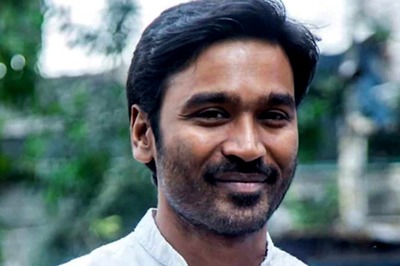
views
Mumbai: Mercury hit the 41.6 mark yesterday, breaking the Colaba record set in 1981; it was just 0.1 degrees shy of the all-time record set in Santa Cruz in 1956. P.S.: Japan’s quake is not the reason for the scorching heat.
If you spent all of yesterday wondering why it was so hot, here’s a garma garam update for you. The mercury hit 41.6 Celsius yesterday in Colaba, setting a record for the highest recorded temperature in half a century, and that is why you were sweating bucket loads through the day.
And if one goes by what the weather experts have to predict, it’s only going to get hotter this month. So keep an eye on the heat waves in the next 48 hours.
Officials from the weather department said that so far the hottest temperature recorded in Colaba in the month of March was in 1981 at 40.4 (March 5). Yesterday’s temperature set a new record in Colaba, and missed the all-time record by a whisker.
And if yesterday’s record breaking 41.6 wasn’t enough, the lowest temperature recorded in Colaba was also relatively high at 23.
The suburbs were also on the verge of breaking a 1956 temperature record. Yesterday Santacruz recorded a high of 41.3 C, a small shy from the 41.7 degree C recorded 55 years ago. Looking at the temperature records over the last 10 years (month of March) (see box), the last time the mercury crossed the 40 C mark was in 2007.
Dr R V Sharma, deputy director, Met (western region) said, “On Tuesday the recorded temperature was 37.3 C and suddenly on Wednesday we witnessed a record breaking temperature. This is entirely due to the hot and dry northeasterly winds that have struck Mumbai.
Till yesterday afternoon there was no sea breeze, which could have helped lower the temperature. Hence, the record-breaking temperature was recorded.”
Officials from the Indian Meteorological Department (IMD) said that yesterday’s maximum temperature was five degrees Celsius above average. Whereas, environmentalists claim that this is going to be a continuing trend with extreme temperatures and heavy rainfall through the seasons in the city.
Sharma added that Mumbaikars will not be able to have a respite from this soaring weather for next 48 hours. “The temperature is likely to dip by one or two degree Celsius in the next 48 hours. However, we will not see any drastic drop in temperature as of now,” he added.
Experts Speak
Dr Anand Patwardhan, professor from IIT-B feels the rise in temperature is alarming.
“We cannot arrive at a conclusion as to why there is a sudden rise in the temperature. If you observe last year the monsoon had heavy showers, so much so that it led to a flood-like situation. Similarly, the soaring temperature is an indication of a hot summer season ahead. The exact picture, on whether the temperature will rise or stay constant, will emerge only in a few days,” he said.
BMC says
GT Ambe, executive health officer, Brihan Mumbai Municipal Corporation (BMC) said, “People should avoid stepping out in sun. And they should avoid having ice golas from street vendors as it may lead to diseases.”
Don’t blame Japan
Dr Vasant Govarikar, Expert, Climate Change:
The sudden rise in temperature recorded in Colaba has nothing to do with the present natural calamity in Japan. This is quiet normal as the temperature increases in the second half of March from 41 to 49 in various parts of our country.
March is the transition period for temperature rise. If we see the temperature trend in the past 100 years in the country and with reference to Mumbai, it indicates that a 42C temperature after 30 years is absolutely normal.
Health aspects
Protect your eyes
“UV protective glasses and tear substitutes for dryness of eyes is the remedy to keep the eyes moist and also hydration for the body is much more important. Infection is uncommon unless the humidity is too high, but allergic conjunctivitis is very common in hot dry weather. Go to an eye specialist if you spot redness or watering from the eye,” suggested Dr Ambarish Darak, eye surgeon based in Mumbai and Pune.
Dehydration
“During temperature fluctuations people tend to fall sick regularly. However, as soon as the temperature becomes stable the number of people falling sick will automatically decrease,” said Dr Pratit Samdani from Jaslok hospital, who is lately seeing a rise in the patients complaining of fever, dehydration and pneumonia.
The body is unable to accept the sudden fluctuation in the temperature. “Because of excessive sweating people even tend to develop fungal infections,” added Dr Samdani.
Sunstroke
Usually, the increased heat in the atmosphere, leads to sunstroke and dehydration.
Dr Jalil Parkar, Chest physician, Lilavati hospital, said, “Dehydration, weakness, headache and nausea are the common complaints that people keep coming with. Usually the elderly are easily affected by these huge temperature fluctuations. While the younger lot, will come with soar throats, body ache and fever along with a one-sided headache.”





















Comments
0 comment